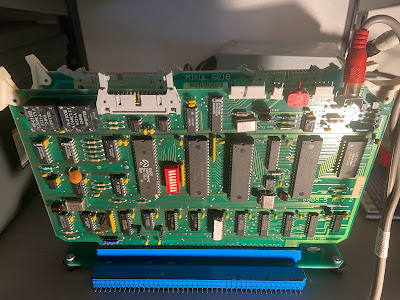I received some membrane keypads in the mail today. Unfortunately, I neglected to order the 4x5 Keypads I hoped to use and only ordered 4x4 and (accidentally) 3x4 keypads. No problem. The 4x4 keypad will work fine to navigate the menus, with: * as clear; # as enter; D as Main Menu. You can't quite set the clock though because it is missing the keys to select year/month/day as they are on the missing row.
Here is the pinout, which requires a small jumper board to connect to either a 4x4 or 5x4 keypad, as the P3 header is not arranged in a very logical way:
MIKUL 6809-5 eBay | Alltronics
P3 HEADER 4x4 Keypad | 5x4 Keypad
___
COL1 |1 -> 3 - ROW3 | 6 - ROW3
ROW1 ||2 -> 5 - COL1 | 5 - COL3
COL2 ||3 -> 2 - ROW2 | 2 - ROW2
ROW2 ||4 -> 6 - COL2 | 7 - COL4
ROW3 ||5 -> 7 - COL3 | 9 - COL5
ROW4 ||6 -> x - N/C | 3 - COL2
COL3 ||7 -> 1 - ROW1 | 8 - ROW1
ROW5 ||8 -> 8 - COL4 | 1 - COL1
COL4 |9 -> 4 - ROW4 | 4 - ROW4
|___
I think these are the orignial keypads that came with the TEMPMATE and CASEMATE firmware (pics from various auction sites):


Unfortunately, I think the cheap ebay 4x5 keypads I hoped to use will not work because they have 5 rows when the MIKUL's TEMPMATE software is written to use a keypad with 5 columns.
I found a keypad at Alltronics that has the right layout for only a few dollars. That keypad only has the flat flexible cable without a PCB connector, so I had to source that too. Also, it does not have the nice clicky metal domes in it so it feels mushy, but it works, and I can finally set the clock!:





